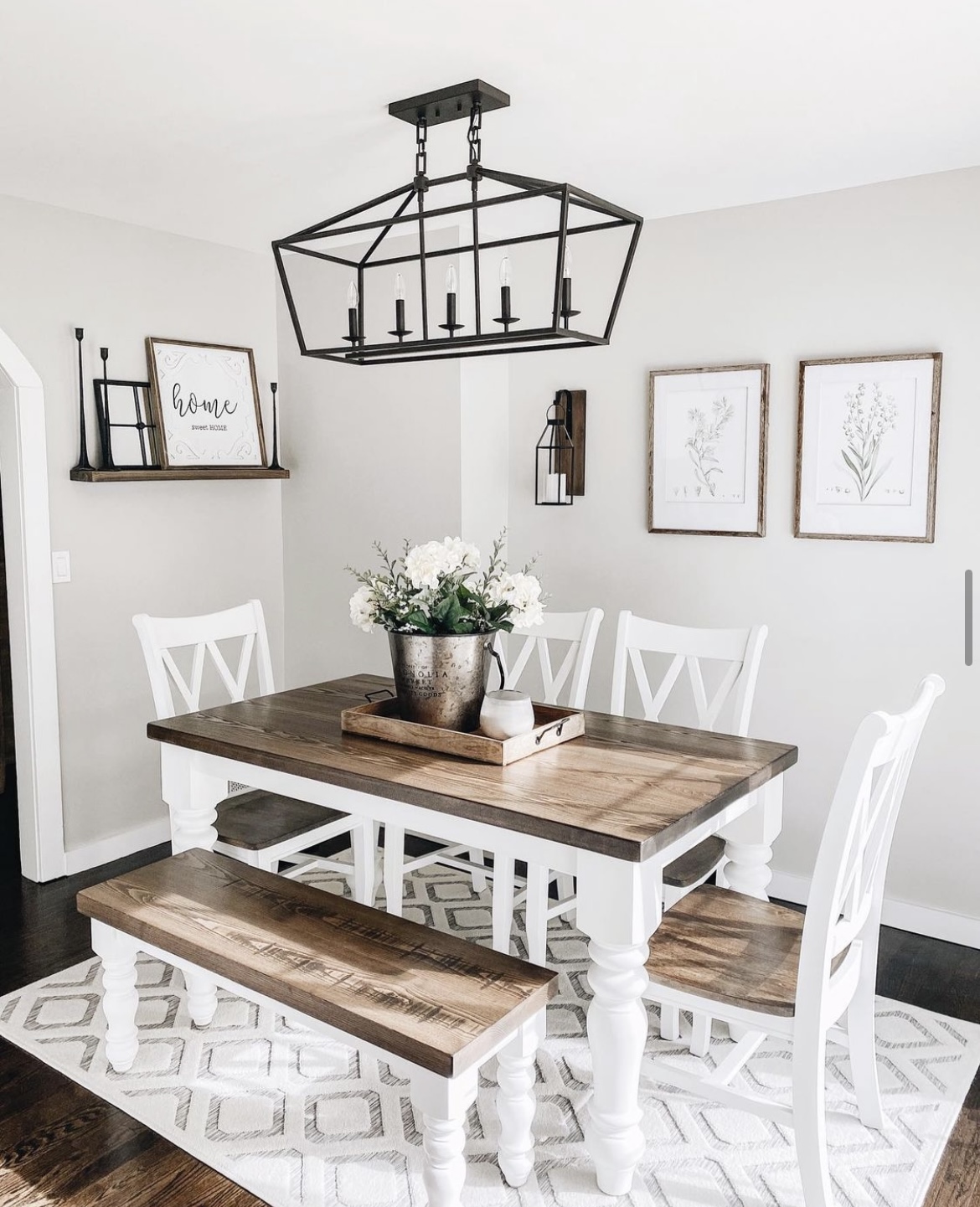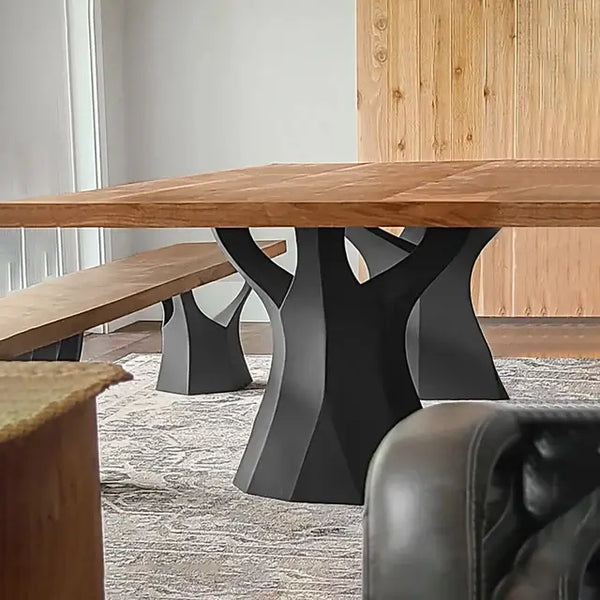From Typical to Modern: Discover the Perfect Dining-room Table Legs for Your Style
While traditional designs such as cabriole and turned legs evoke a sense of ageless refinement, contemporary designs like barrette and geometric choices offer a chance for striking aesthetic interest. As you think about these aspects, the question remains: exactly how can you seamlessly incorporate these diverse leg styles to create an unified dining experience?
Understanding Table Leg Styles
The range of eating room table leg designs can substantially influence both the aesthetics and performance of the area. Each leg design adds distinct visual aspects and functional attributes, satisfying varied design choices and usage demands. Comprehending these styles is essential for choosing the best eating table that straightens with your general indoor style vision.
For example, tapered legs offer a clean, timeless appearance that can boost a room's elegance, while stand bases give security and make the most of legroom, making them excellent for smaller sized areas. Hairpin legs, a hallmark of mid-century modern layout, present a commercial flair, permitting a ventilated, open feel. Likewise, trestle legs stimulate rustic appeal, providing durable assistance and a sense of timelessness.
Moreover, the choice of materials plays a substantial duty. Wooden legs can bring heat and structure, whereas steel choices typically convey a streamlined, contemporary ambiance. Inevitably, recognizing table leg styles is important for developing a cohesive dining location that reflects individual style while ensuring usefulness and comfort. By attentively thinking about these elements, you can improve both the functional and aesthetic appeal of your dining space.
Traditional Table Leg Options
When choosing eating space table legs, typical options often symbolize classic elegance and craftsmanship. These layouts show an abundant heritage and a dedication to quality, making them optimal for those that appreciate traditional visual appeals.
Among one of the most famous typical leg styles is the cabriole leg, identified by its elegant curved form. This layout commonly includes ornamental carvings and is most typically discovered in Queen Anne and Chippendale furniture. Another popular option is the turned leg, which boasts a collection of smooth, rounded forms that provide a traditional look while maintaining security.
Moreover, the straight leg, while easy, offers a unadorned and sturdy structure that can blend seamlessly with a range of tabletop styles. For those attracted to ornate describing, claw-and-ball feet legs evoke a feeling of grandeur and can offer as a sensational centerpiece in any kind of dining room.
Lastly, pedestal bases, although not purely legs, offer an alternate traditional option that permits for sufficient legroom and can be perfectly carved. Each of these standard leg styles adds to the total setting of visit the website a dining-room, weding feature with visual allure.

Modern Table Leg Layouts
Modern table leg layouts supply a varied variety of designs that emphasize cutting-edge materials and tidy lines. These designs usually prioritize capability while serving as striking centerpieces within an eating space. Minimalist aesthetic appeals prevail, with legs crafted from materials such as steel, glass, and engineered timber, which contribute to a airy and modern feeling.
One prominent design is the barrette leg, characterized by its slender, tapered structure that offers security without overwhelming the tabletop (dining room table legs). This style is often found in mid-century modern furniture and can easily complement different table shapes. One more pattern is making use of geometric forms, where legs might tackle angular or unbalanced kinds, including aesthetic interest and a touch of virtuosity

Blending Styles for Distinct Rooms
Frequently, property owners look for to produce special dining areas that mirror their personal design by blending numerous layout components. This method enables the unification of varied aesthetics, leading to a harmonious yet distinctive setting. For example, matching a rustic wooden table with streamlined, modern steel legs can develop a captivating contrast that elevates the area's general charm.
In addition, integrating vintage table legs with modern tabletops can stimulate a sense of history while maintaining a modern sensibility. Such mixes not just display individual taste yet also encourage creativity, allowing home owners to curate a space that feels both personal and inviting.
Shade plays a crucial role in this blending process; picking table legs that match or comparison with the existing shade plan can improve aesthetic passion. Whitewashed legs can soften the boldness of a dark table surface area, developing a well balanced visual.
Tips for Selecting the Right Legs
Picking the right table legs is important for attaining both performance and aesthetic charm in your dining space. Begin by considering the general design of your area. Conventional setups profit from legs that include intricate carvings or turned styles, while contemporary rooms may ask for smooth, minimal designs.
Following, analyze the elevation and stability of the legs. dining room table legs. Conventional table range between 28 to 30 inches in elevation, so make sure the legs enhance this dimension for comfort. In addition, robust materials, such as wood or metal, can improve stability and durability
Examine the leg form too-- alternatives include right, tapered, or stand designs. Straight legs offer a classic appearance, while tapered legs can add a touch of beauty. Pedestal bases provide adequate legroom and are ideal for smaller spaces.
Conclusion
In recap, picking the ideal dining area table legs needs careful factor to consider of both typical and contemporary designs. By harmonizing leg design, height, and product with the total décor, a cohesive and inviting atmosphere can be attained.
The selection of eating space table leg styles can significantly read here affect both the appearances and functionality of the space. Inevitably, comprehending table leg styles is essential for producing a cohesive eating area that mirrors personal design while guaranteeing usefulness and comfort.One of the most iconic standard leg styles is the cabriole leg, defined by its elegant curved form. Straight legs provide a timeless look, while conical legs can add a touch of sophistication.In summary, selecting the perfect eating room table legs needs mindful factor to consider of both conventional and modern styles.